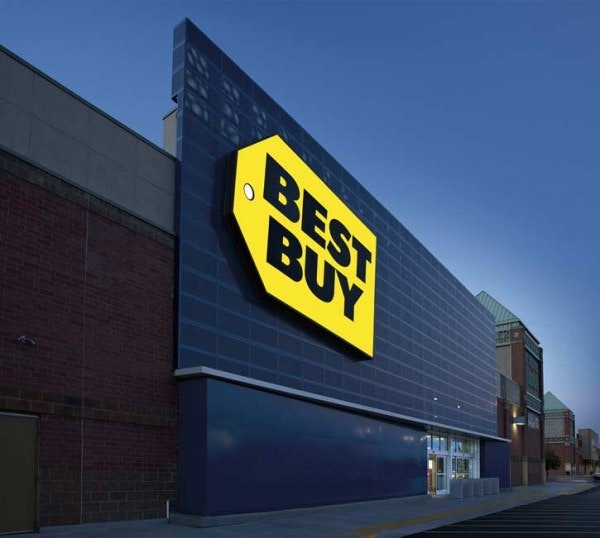E-commerce. It launched Amazon.com, Inc. (NASDAQ:AMZN) and killed Borders. But are there limits to what it can do for a company? For today’s trivia quiz, put the following five companies (listed alphabetically) in order by annual online sales volume, from greatest to least:
Amazon
Apple Inc. (NASDAQ:AAPL)
Best Buy Co., Inc. (NYSE:BBY)
Staples, Inc. (NASDAQ:SPLS)
Wal-Mart Stores, Inc. (NYSE:WMT)
(Note: No squeakers here! Each company is separated from the others by at least $1 billion in annual online sales)
Thinking outside the (big) box

One of the issues that Best Buy — along with many other big box retailers — is facing right now is the “showroom effect.” That is, consumers go into Best Buy to look at the latest in computers, TVs, electronics, etc., and then head home to buy them online where they’re cheaper and where they can — often illegally — avoid state sales tax. Best Buy Co., Inc. (NYSE:BBY), even though it is #11 nationally in annual online sales, can’t offer the best buy (lower prices) because the big box is expensive to maintain: lots of floor space to rent, lots of inventory to maintain, lots of salespeople to pay.
Apple Inc. (NASDAQ:AAPL) stores, however, don’t have this problem, because they are serving as their own middleman. The only place that most Apple devices are showroomed is in the Apple store, so Apple doesn’t care if you try in the store and then buy online or not: either way, Apple ends up with the profits. And, because Apple has established a well-known no discounts policy, people know that they have nothing to lose by buying at the Apple Inc. (NASDAQ:AAPL) store. And the few products that Apple does release to other retailers? They can demand a premium for them and let the third-party retailer worry about the spread (i.e. the difference between supplier price and retail).
In fact, many top brands — including NIKE, Inc. (NYSE:NKE) (#72), Under Armour Inc (NYSE:UA) (#143), and even Microsoft Corporation (NASDAQ:MSFT) (#74) — are putting money and energy into opening their own branded stores, where the showroom effect is moot. And as traditional retailers feel the squeeze and the showroom effect, we may see more and more of these direct manufacturer-to-consumer retail locations. It’s one of the main reasons I’m bearish on big boxes like Best Buy Co., Inc. (NYSE:BBY).
The power of price
What about instances where the showroom effect doesn’t apply? After all, you’re not likely to go to a grocery store, read the nutrition labels on all the soup cans, and then go home and order some Campbell’s online. The same is true for many everyday consumer items. Discount retailers like Wal-Mart Stores, Inc. (NYSE:WMT) benefit from this trend, because it’s unlikely that anyone is going to open up a soup store that sells soup only. Even if they did, most people would still get their soup with the rest of their groceries at Wal-Mart or Kroger or wherever.

But Wal-Mart’s reputation as a discount retailer that offers incredibly low prices carries over to online sales. And because the world’s largest retailer carries a wide variety of items and already has a nationwide shipping infrastructure, they are a major player in the world of e-commerce. Their free ship-to-store shipping option — buy online and have the item shipped to the Wal-Mart nearest you — helps them remain competitive in the e-retail space as well as the physical retail space. In fact, Wal-Mart Stores, Inc. (NYSE:WMT) is the #4 overall e-retailer in the U.S., and its online sales are increasing at a healthy 20% clip, dwarfing most of its discount competitors like Target Corporation (NYSE:TGT) (#23) and Sears Holdings Corporation (NASDAQ:SHLD) (#8), owner of Sears and Kmart.
